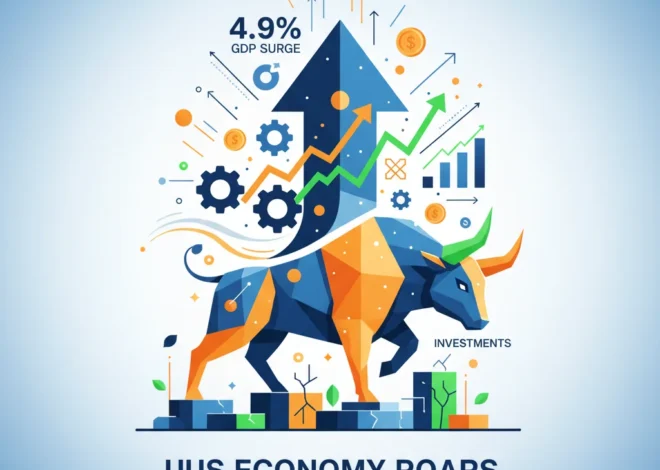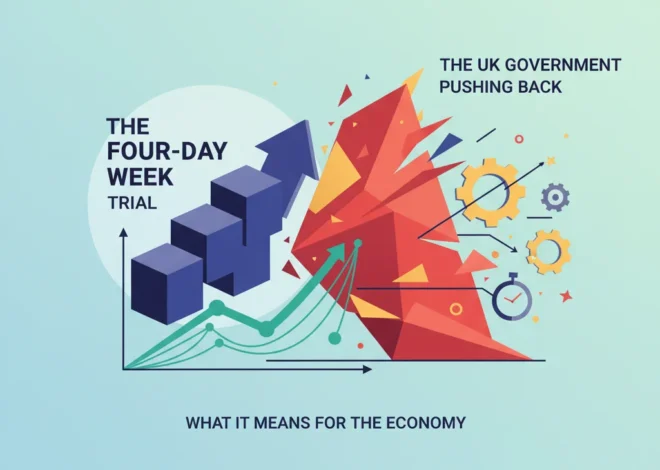
The Investor as Polymath: Solving the Market’s Most Complex Crossword
Every morning, millions of people begin their day with a ritual: a cup of coffee and a crossword puzzle. It’s a mental warm-up, a structured challenge of logic and vocabulary. For many in the world of finance, from seasoned investors to ambitious business leaders, the day’s *real* puzzle begins when the markets open. This puzzle is infinitely more complex, its clues written in the language of economic data, market sentiment, and technological disruption. The grid isn’t black and white squares, but the interconnected global economy.
Much like the Financial Times’ “Polymath” crossword, successful investing requires more than just specialized knowledge in one area. It demands the mind of a polymath—one who can draw upon economics, psychology, technology, and history to see the complete picture. In today’s intricate financial landscape, viewing the market as a massive, dynamic crossword puzzle provides a powerful framework for building a winning strategy. It’s about understanding not just the individual clues, but how they intersect to reveal the final solution.
Decoding the “Across” Clues: The Macroeconomic Framework
In any crossword, the “across” clues often provide the foundational words that structure the entire grid. They are the horizontal beams upon which the vertical clues hang. In the world of investing, these are the macroeconomic trends that set the stage for the entire market. They are the broad, sweeping forces that affect every sector, from banking to technology.
Think of inflation, interest rates, GDP growth, and unemployment figures as your key “across” clues. A central bank’s decision to raise interest rates, for example, is a 10-letter word that stretches across the entire economy, impacting everything from corporate borrowing costs to consumer spending habits. According to the International Monetary Fund’s April 2024 outlook, global inflation is projected to fall from an annual average of 6.8 percent in 2023 to 5.9 percent in 2024, but the path remains uncertain. This single clue—the direction of inflation—forces investors to reconsider their assumptions about growth stocks, value stocks, and fixed-income assets. It’s a clue that must be solved before you can confidently tackle the more specific “down” clues.
Ignoring these macroeconomic fundamentals is like trying to solve a crossword by only looking at the three-letter words. You might get a few right, but you’ll never see the big picture. A true polymath investor understands that a deep knowledge of economics is the starting point for any sound financial strategy. They read the minutes from the Federal Reserve meetings, analyze trade balance reports, and understand the geopolitical tensions that can shift the entire economic landscape.
Solving the “Down” Clues: Deep Dives into a Volatile Stock Market
Once you have a few “across” answers in place, the “down” clues become easier to solve. These vertical entries represent the microeconomic factors: the performance of individual companies, the health of specific sectors, and the disruptive potential of new technologies. This is the realm of stock market analysis, where investors zoom in from the 30,000-foot view to the ground level.
Solving these clues requires a different set of skills. Here, the investor must be part accountant, part detective, and part industry analyst. This involves everything from dissecting a company’s quarterly earnings report and balance sheet (fundamental analysis) to studying chart patterns and trading volumes (technical analysis). Each approach offers a different way to find the “answer”—the true value and future potential of a particular stock or asset.
Below is a brief comparison of these two primary methods for analyzing the market’s “down” clues:
| Analytical Approach | Core Focus | Key Tools & Metrics | Investor Profile |
|---|---|---|---|
| Fundamental Analysis | A company’s intrinsic value based on its financial health and economic conditions. | Earnings per Share (EPS), Price-to-Earnings (P/E) Ratio, Balance Sheets, Cash Flow Statements. | Long-term investors (e.g., Warren Buffett) looking for undervalued companies. |
| Technical Analysis | Market trends and price patterns, believing history tends to repeat itself. | Moving Averages, Relative Strength Index (RSI), Chart Patterns (e.g., Head and Shoulders). | Short-term traders focused on market timing and momentum. |
A polymath investor doesn’t exclusively choose one method. They understand that both provide valuable insights. Fundamental analysis helps determine *what* to buy, while technical analysis can help determine *when* to buy or sell. The intricate work of trading and portfolio management relies on skillfully interpreting these specific, vertical data points within the broader context provided by the macroeconomic “across” clues.
The Intersecting Squares: How Fintech and Blockchain Are Redrawing the Grid
The most crucial—and often most difficult—part of a crossword is the intersection. The letter that completes both an “across” and a “down” word is the key that unlocks entire sections of the puzzle. In modern finance, the most powerful intersections are being created by financial technology, or fintech.
Fintech innovations are not just new clues; they are fundamentally changing the rules of the game. Digital payment platforms, robo-advisors, peer-to-peer lending, and high-frequency trading algorithms have transformed the traditional banking and investment landscape. They connect previously disparate parts of the financial world in novel ways, creating both immense opportunities and new systemic risks.
Perhaps the most disruptive force is blockchain technology. Initially known for powering cryptocurrencies, its potential is far broader. Blockchain offers a decentralized, transparent, and immutable ledger that could revolutionize everything from stock settlement and cross-border payments to supply chain finance. A report from Grand View Research projects the global fintech market to reach over $1.2 trillion by 2030, a testament to its explosive impact. Understanding how this technology intersects with traditional finance is no longer optional for the serious investor; it’s essential for solving the modern market puzzle.
The Final Grid: Building a Coherent and Diversified Portfolio
A finished crossword is a thing of beauty and logic. Every word fits perfectly, every square is filled, and a coherent whole emerges from dozens of disparate clues. The same is true of a well-constructed investment portfolio. It’s not just a random collection of high-performing stocks; it’s a carefully balanced and diversified strategy where each asset plays a specific role.
Solving the market puzzle isn’t about getting every single clue right. Even the best investors make mistakes. The goal is to get enough of the major “across” and “down” clues correct to build a resilient structure that can withstand the inevitable wrong answers. This is the principle of diversification—spreading investments across various asset classes (stocks, bonds, real estate), geographic regions, and industries.
Your final, “solved” grid is your long-term financial plan. It reflects your understanding of the macroeconomic environment, your deep-dive analysis of specific assets, and your strategic allocation based on your risk tolerance and goals. It’s a living document, a puzzle that is never truly finished but is constantly being updated as new clues emerge. The polymath investor finds joy in this continuous process of learning, adapting, and solving.
From Belfast to Wall Street: Why Confronting the Past is the Future of Finance
Ultimately, the challenge of investing is a test of intellectual curiosity and mental fortitude. It requires us to connect disparate fields, from the intricacies of monetary policy to the cutting edge of financial technology. By embracing the mindset of a polymath and viewing the market as the ultimate intellectual puzzle, we can navigate its complexities with greater confidence, clarity, and success.


